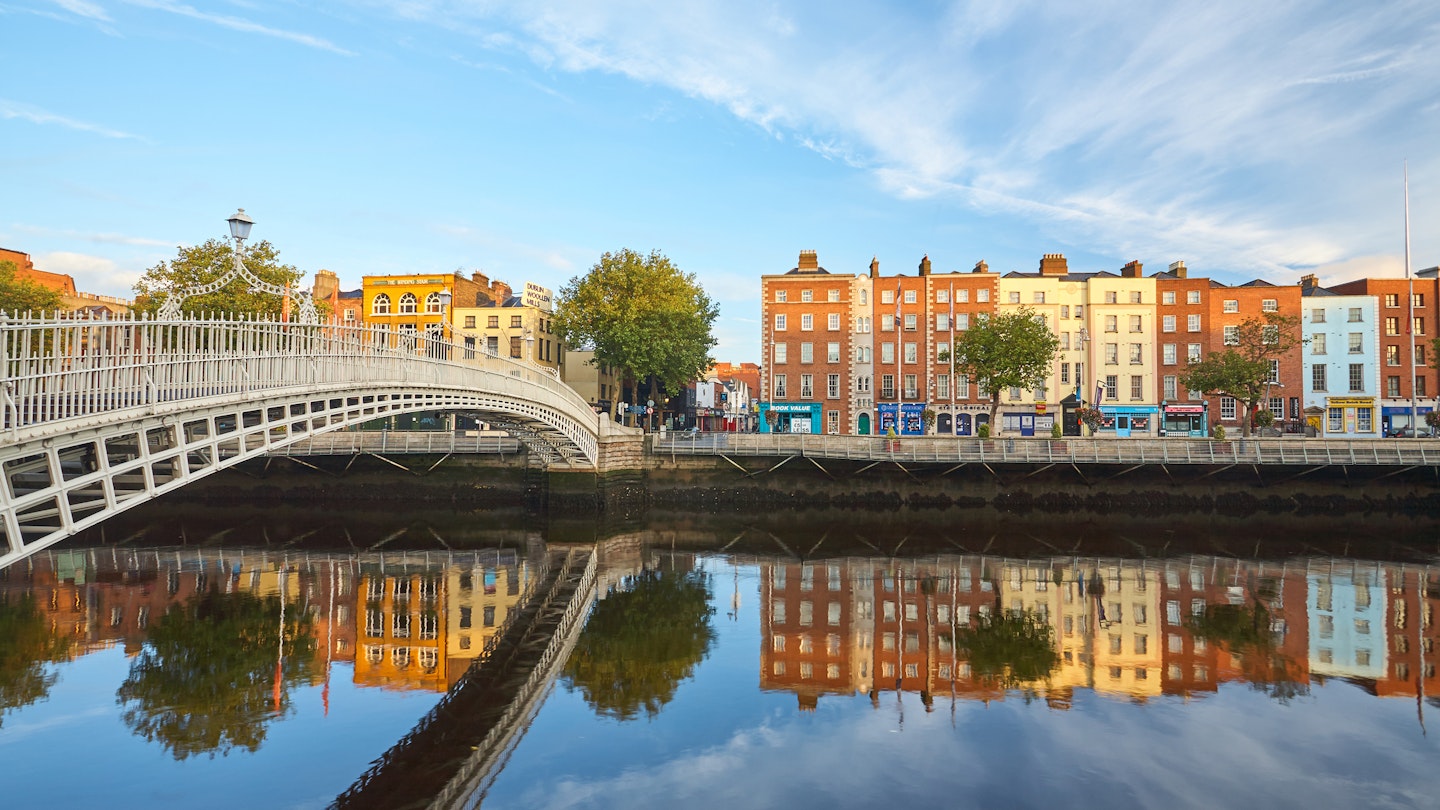Budget-Friendly Tips for Exploring Dublin
Even if your budget is tight and your pockets are light, there are ways to experience everything Dublin has to offer. While you may have to bypass high-end restaurants and opulent castles, you won’t miss out on a diet of international street food, live music sessions, and sociable hostels.
Dublin, like any major European capital, can be expensive. However, the city offers a plethora of free and low-cost activities. One thing you’re guaranteed to find at no cost is the renowned Irish hospitality, great craic, and maybe a little rain! Here are some of our top tips for visiting Dublin on a budget.
1. Spread Your Search to Find Bargain Routes to Dublin
Ireland’s main international airport is in Dublin, allowing for excellent global connectivity. As the hub of budget carrier Ryanair, there are always affordable ways to fly to Dublin from various European destinations. Additionally, Aer Lingus often offers deals and flash sales on its many transatlantic routes.
Unfortunately, Ireland lacks direct rail connections to mainland Europe or the UK; however, train travel can be combined with a ferry across the Irish Sea. Irish Ferries offers special “RailSail” fares on the Holyhead to Dublin route, including onward train travel from as little as €45 per person each way. Stena Line also operates the Holyhead to Dublin route, while Irish Ferries connects Dublin to Cherbourg, France, accommodating both foot and car passengers. Be sure to look out for deals on both carriers.
2. Travel During the Shoulder Season
Consider visiting Dublin during the shoulder season, from late August to October, which often provides the best weather and value for tourists. September, after schools resume, typically offers great deals. Peak travel times, such as St. Patrick’s Day in mid-March or the lead-up to Christmas in December, tend to inflate prices. Therefore, consider planning your visit for February, April, November, or January to help your euros go further.
3. Seek World-Class Views on a Budget
Sometimes the best views of a city are found in nature. While there are numerous great views throughout Dublin (notably from the bridges over the Liffey), the most breathtaking vistas are easily accessible from outside the city. Explore spots like Killiney Hill or Howth Head for incredible views of the Irish Sea and the sprawling Dublin landscape, set against the backdrop of the Dublin and Wicklow Mountains.
Dublin also provides outdoor enthusiasts with plenty of opportunities for hiking and sea swimming. The popular Bray to Greystones walking route in nearby County Wicklow offers an easy and scenic trip from the capital—visit during the week for a quieter experience.
4. Enjoy Free Entry to Dublin’s Museums
While many of Dublin’s top museums charge admission fees, there are plenty of museums that offer free entry. The National Museum of Ireland, for instance, celebrates the country’s rich history and decorative arts and consists of three distinctive locations throughout the city.
Art lovers should visit the Hugh Lane Gallery, the National Gallery of Ireland, or the Irish Museum of Modern Art (IMMA) in Kilmainham. Additionally, some institutions conduct free guided tours led by expert staff, enhancing your visit without any additional costs.
5. Experience Live Music While Enjoying a Pint
Music is the lifeblood of Dublin, with buskers providing a constant soundtrack in various areas of the city. With countless pubs featuring traditional Irish music, you can enjoy a pint while immersing yourself in authentic live performances. Popular spots include The Celt and O’Donoghue’s, amongst many others.
6. Explore Affordably Diverse Dining Options
Dublin’s multicultural landscape means you can explore a variety of international flavors at reasonable prices. Indulge in a satisfying bowl of ramen for around €14, or enjoy a delicious falafel wrap for €6.50 at Umi. Trendy dining spots like 777 offer affordable options; on Sundays, every dish is priced at €7.77.
7. Choose Your Accommodation Wisely
Dublin is known for being an expensive city to stay in, yet it boasts a multitude of hotels and hostels. To secure the best deals, try to visit during the week and consider staying in less central districts to save money. Additionally, consider private rooms in hostels, which can often provide better value than traditional hotel rooms.
8. Utilize Public Transport to Explore the City
Instead of renting a car, which can be costly and a hassle with parking fees, use Dublin’s public transport options. The city center is flat, compact, and walkable, allowing for easy exploration on foot. You can also take advantage of Dublin Bikes, public buses, and suburban trains like the DART to reach various attractions and suburbs with ease.
9. Enjoy Public Art Installations for Free
Exploring Dublin’s many public art installations can provide a fun and enriching experience for free. Some of the city’s most iconic statues include those of Molly Malone and Oscar Wilde. Furthermore, locations like the Garden of Remembrance and the Famine Memorial offer striking artistic perspectives worth visiting.
10. Affordable Theater Experiences Await
If you’re keen on experiencing Dublin’s vibrant theater scene, you can find cheap tickets for shows at various venues. The Abbey Theatre and Bord Gáis Energy Theatre often have performances starting from as low as €15 for matinees, making theater accessible to all.
11. Pack a Picnic for People-Watching
Dublin’s green spaces, such as Merrion Square and St Stephen’s Green, are perfect for enjoying a picnic while people-watching. You can find a variety of gourmet options in local markets and delis, ideal for assembling a delicious, budget-friendly meal to enjoy outdoors.
Dublin by Average Price:
- Hostel room: €25–40 per night
- Basic room for two: €100–130 per night
- Self-catering apartment: €250 per night
- Public transport ticket: €2.30
- Coffee: €3
- Takeaway sandwich: €7
- Dinner for two: €50–60
- Beer/pint at the bar: €5.50
This article was first published May 5, 2022, and updated April 2, 2024.




